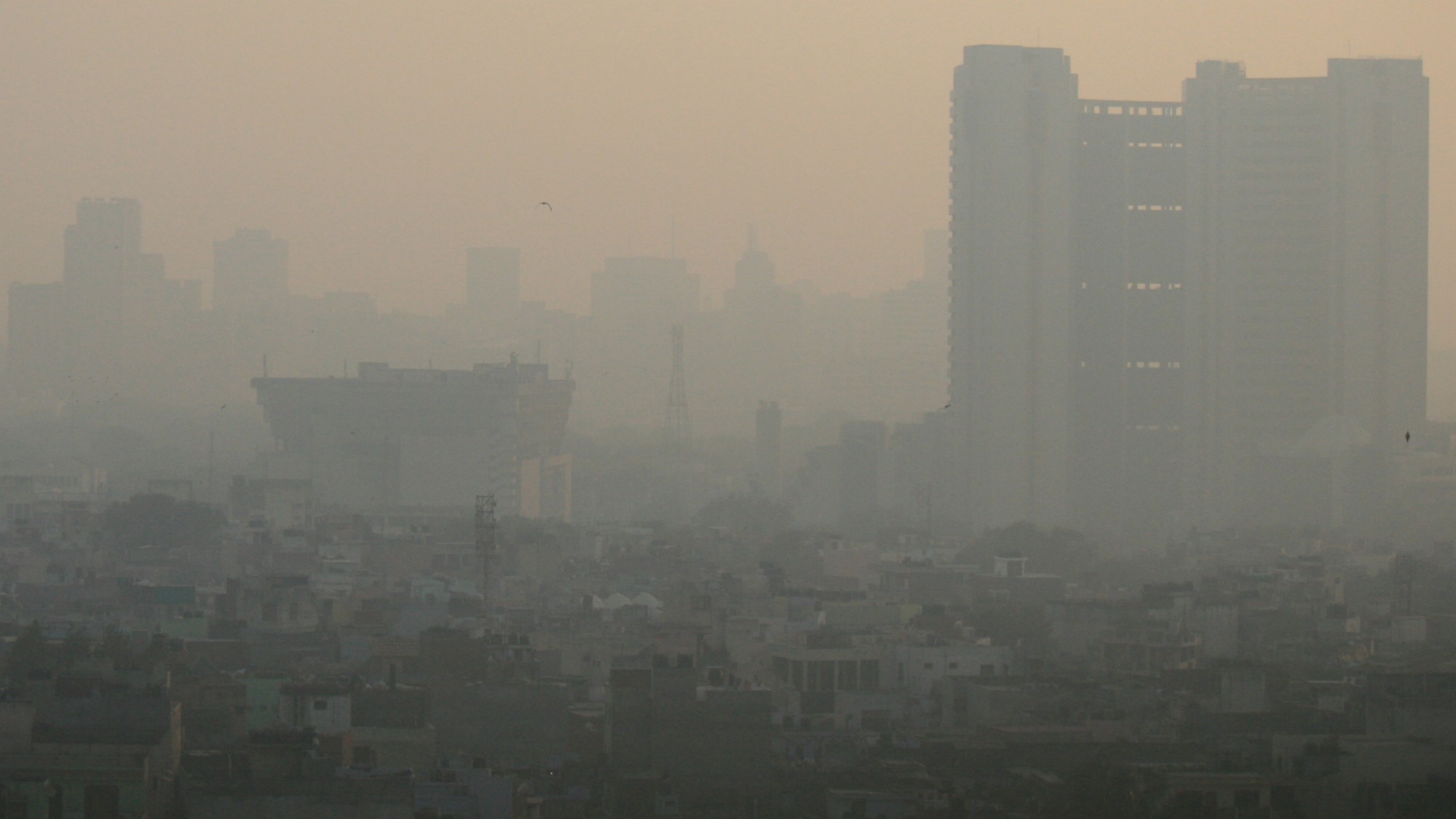
Jean-Etienne Minh-Duy PoirrierDelhi smog.
I cough a lot.
It’s a pervasive pulmonary curse here in Delhi where I live, courtesy of the city’s soupy winter smog.
The air pollution in India’s capital during the wind-deprived cold season is abominable. The sources are numerous and perpetual: It’s caused by soot spewed out of coal-burning power plants and from vehicles idling on congested roads. It’s caused by fires — large ones used to remove crop residue from surrounding farms, and small ones used for cooking and warmth by city dwellers.
Sometimes data shows that the air in Delhi is worse than it is in Beijing, that presumed global capital of vaporized carbon. Sometimes data shows the opposite. So which of these two polluted Asian megacities has dirtier air overall?
An unusual international brouhaha has just erupted over that very question, fueled by media coverage of Delhi’s pea-soup smog.
In separate articles published this week, two prominent newspapers concluded that Delhi’s pollution is worse than Beijing’s. Both articles have been challenged. A scientist with the Environmental Performance Index (EPI) — a joint project of Yale and Columbia — says a Hindustan Times page one article was based on a misinterpretation of the project’s latest report. And a similar story in the New York Times that had nothing to do with the EPI has been criticized by the Indian government for leaning heavily on limited data.
I’m familiar with the challenges of comparing air pollution levels among cities in developing countries. I wrote a piece for Slate last winter about World Health Organization data showing that Delhi is among 26 cities, most of them in Asia, that consistently endure worse air pollution than Beijing. But the WHO data was cobbled together from a variety of sources, and a lack of air-quality monitoring standards makes precise scientific comparisons impossible.
Indian officials have been scrambling to repudiate the recent news reports, pointing out that their own hopeless air-testing regimes mean that nobody can say with certainty whether their air is worse than Beijing’s. The Wall Street Journal explains (in an article written by my wife — and, yes, this is the kind of thing that we talk about over dinner):
An accurate comparison of air quality in any two cities requires data from consistently calibrated ground stations. Beijing reports data on PM 2.5 concentration on an hourly basis over a publicly accessible platform, according to EPI. There are several air monitoring stations throughout the Indian capital and at least two different government-funded sites that report their results. But one rarely works and the other makes an assessment based on 24-hour-averages.
To be sure, Delhi has a pollution problem. But a scientist here who monitors the capital’s air quality says that recent comparisons to Beijing made in both the Hindustan Times and the New York Times are speculative.
“The air quality in Delhi and in India is very bad,” said G. Beig, a program director at a research department under the Ministry of Earth Sciences. “But certainly it is not as bad as Beijing’s,” he added.
The answer to the question of which city is more polluted is less important than the debate itself. The debate is a reminder that although China is notorious for its air pollution, the problem of filthy skies is one that stretches almost throughout Asia. Few regulations govern the rampant burning of coal and other fuels in developing Asian countries, which are desperately trying to catch up to Western levels of wealth.
Media reports that focus solely on China’s pollution woes have tended to understate the vastness of the world’s air-pollution problem — a problem that scientists blame for millions of deaths every year (most of them in Asia). A lot of Asia’s air pollution ends up blowing over the Western U.S., fueling at least one extra smog day in Los Angeles every year. Soot blown mountainward also traps heat and settles on glaciers, hastening their demise.
But media focus on China’s pollution may have helped spur some of the country’s recent environmental reforms. And if that’s the case, then the growing focus on Delhi’s deadly air pollution is warmly welcomed by this cough-wearied environmental reporter.
Correction: Yale and Columbia collaborate to produce the Environmental Performance Index — not Yale and Harvard, as we originally reported.



